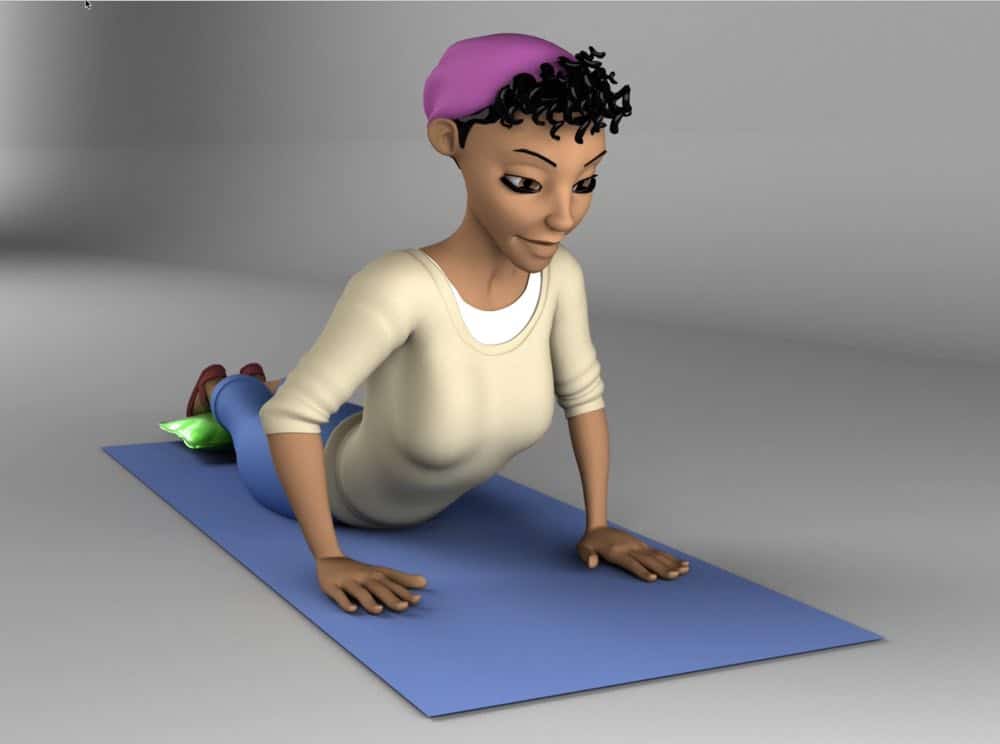A herniated disc (l4-l5 / l5-s1) can cause pain, numbness, and reduced mobility in the lower back. Fortunately, the symptoms of a herniated disc will improve over time, and there are several signs that the herniated disc is healing.
According to an article from Harvard Health, 90% of the time — pain caused by a herniated disc will go away on its own within six months.
Read on “Will my herniated disc heal on its own?” at Harvard Health
Sign #1 – Decreased Inflammation in Lower Back
One way to tell if a herniated disc is healing is if the affected area begins to feel less soreness, numbness, and/or tightness.
As the disc begins to heal, the inflammation that was causing discomfort will reduce, and the pain will typically start to subside.
Sign #2 – Increasing Range Of Motion In Lower Back
Another sign that the herniated disc is healing is if the range of motion in the affected area is gradually increasing.

It is important to build up the range of motion gradually and cautiously, as too much too soon may cause further damage. Regularly performing low-impact exercises and stretches will help increase flexibility and range of motion.
Sign #3 – Overall Improved Mobility And Strength
Improved mobility and strength are key indicators that the herniated disc is healing.
As the l4-l5 or l5-s1 disc heals, the nerve pressure should ease, allowing flexibility and strength to slowly return. However, strength improvements may take time and patience as the muscle fibres rebuild and get back to full strength.
Sign #4 – Increasing Walking Distance
Increasing walking distance is also a sign of l4-l5 or l5-s1 herniated disc healing. As the affected area begins to heal, mobility will improve, allowing for a larger range of movement.
Walking for exercise also helps reduce inflammation and encourage healing.
Increased walking distance is a clear sign of l4-l5 or l5-s1 herniated disc healing, and is often accompanied by increased strength and flexibility in the affected area.
Sign #5 – Walking On Heels & Toes Is Possible Again
For those affected by a double herniated disc (l4-l5 AND l5-s1), walking on your heels or toes or both can be impossible at first, and for weeks.

As you test this ability on a regular basis, you will realize that this is gradually coming back. You are slowly being able again to walk on your toes and on your heels.
Again, this is slow process and can take weeks but being able to walk on your heels and/or toes is a clear sign of herniated disc healing.
Sign #6 – Decreased Painkillers Intake
Taking less painkillers is another good sign that a l4-l5 or l5-s1 herniated disc is healing.
As the pain subsides and the inflamed area begins to heal, You will be able to reduce or even completely stop taking painkillers.

This is a sign that the herniated disc is healing and that the inflammation is slowly subsiding.
It is important to remember to check in with your doctor if you are reducing your pain medication as they may recommend further treatments or exercises to help continue the healing process.
Sign #7 – Improved Mood
Another sign of healing from a l4-l5 or l5-s1 herniated disc is improved mood.
Pain from the herniated disc causes stress and makes it difficult to participate in activities that you once enjoyed.
As l4-l5 or l5-s1 disc begins to heal, the pain should start to subside and you will experience an improved mood.
This will help motivate you to continue on with physical activities and engage with friends and family, both of which can further aid in the healing process.
Sign #8 – Increased Focus
Increased focus is often a sign of healing because you are able to devote more energy and attention to the task at hand, allowing you to move forward and make progress in your recovery.
By becoming more focused, You are able to think more clearly, process emotions better, and better understand the circumstances of your situation.
This will enable you to make more positive decisions, which will lead to better outcomes in the long run.
A Simple Exemple
If you can enjoy a good movie rather than being obsessed by pain and discomfort in your lower back, without increasing your medication, than you should consider this a sign of herniated disc healing
Sign #9 – Spending Less Time In Bed
Spending less time in bed or resting is a sign of healing because it indicates that the body is getting stronger and healthier.
When you are healing from an injury or illness, you may find yourself needing more rest and sleep. But, over time, as the body begins to heal, energy levels can increase and the need for as much sleep can decrease.
Less time in bed can be a sign of progress and healing from l4-l5 or l5-s1 herniated disc.







